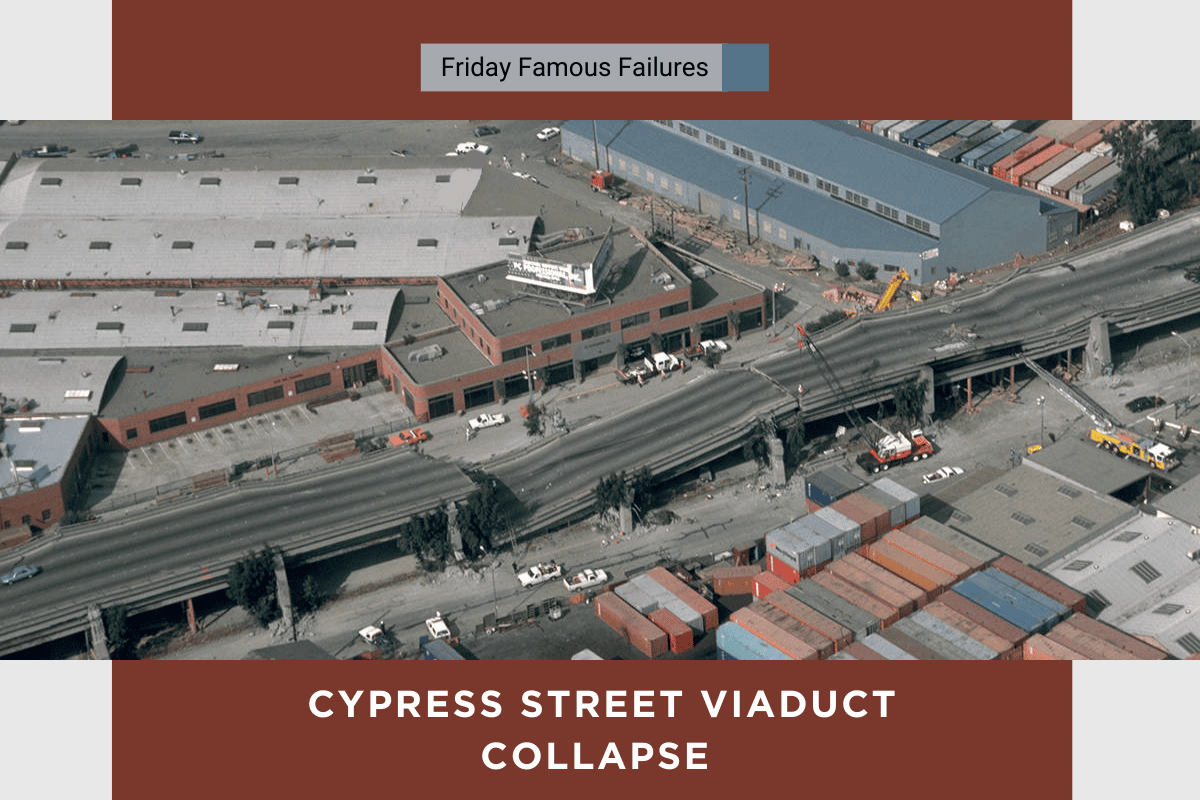On October 17, 1989, Ruth Anne Liu-Johnston left her office in San Francisco and traveled toward downtown Oakland. On her way, she drove across the Bay Bridge and took the I-880 connector. As she drove, she noticed her speedometer indicating that she was driving too fast. Ruth Ann tried to hit the brakes, but nothing happened. “I thought I was speeding, but I wasn’t. I was airborne,” she recalled. Just as Ruth Ann traveled across the top deck of the Cypress Structure, a powerful earthquake, the Loma Prieta quake, shook the earth. “From the corner of my eye, I saw the guardrail snap—that’s when I knew this was an earthquake,” Ruth Ann recalled.
The Loma Prieta earthquake shook most of northern California, causing tremors from Santa Cruz to Sacramento, and causing the upper deck of the Cypress Structure to slam onto its lower deck. The next thing that Liu-Johnston remembered was being pulled out of her car in the top deck of the Cypress Structure and placed into the back of a green pickup. The Loma Prieta earthquake caused an estimated 6 billion dollars in damage and resulted in 3,900 injuries and 63 deaths, and more than half of these deaths were on the Cypress Structure. California is traditionally built in preparation for earthquakes, so why wasn’t the Cypress Viaduct able to withstand the quake?
The plans for the Cypress Viaduct were drawn up in 1949 as part of the Nimitz Freeway, or I-880. The viaduct was a two-tier highway with five lanes per deck. Because of the geology of the area, much of the bridge was constructed on soft mud, as the bedrock was over 150 meters below the surface. While in construction, the California State seismic criteria required planning for a lateral force of 0.06 times the dead load. While advancements in engineering technology progressed over the proceeding years, the Cypress Street Viaduct was not adequately restructured to withstand a large-scale earthquake. When the Magnitude 7.1 Loma Prieta earthquake struck, tragedy ensued. During the earthquake, a 1.4-kilometer section of the Cypress Viaduct collapsed. As the upper level fell, slabs of concrete trapped many unsuspecting motorists.
Two major factors led to the collapse of the Cypress Structure. The first was the geotechnical features of the San Francisco Bay area. The second was the design of the Cypress Street Viaduct and how it responded to earthquakes. The disaster may have been avoided had the City of Oakland followed repeated recommendations that the Cypress Street Viaduct be upgraded with newer engineering developments.
During the earthquake, the Cypress structure vibrated tremendously. While more suitable soils help to dull vibrations, the soft mud in the bay area where the structure was constructed actually increased the vibrations up to five times as compared with the rest of the freeway that was built on rock. Post-analysis of the disaster also indicated that the angular frequency of the seismic waves of Loma Prieta matched almost exactly the angular frequency of the individual horizontal sections. These sediment reverberations may have played a role in contributing to the freeway collapse, as they were not predicted in the original design.
The double-decker design of the Cypress structure exacerbated the tragedy. The Cypress Street Viaduct was constructed of reinforced concrete and designed to be a two-tier multiple-lane highway. The upper and lower levels were connected by two-column bents in a combination of cast concrete and four-pin (shear key) connections. Unfortunately, the upper deck was not securely fastened to the lower deck in some sections. This made the concrete susceptible to vibrations. When the earthquake hit, the pins connecting the upper and lower levels also began to vibrate, causing the concrete surrounding the pins to crumble and break. Without concrete under the support columns, the columns slid sideways under the weight of the upper deck and allowed a large portion of the upper deck to collapse. The prevailing theory is that the weak soil conditions, lack of reinforcement for the columns, and the ineffective pin and bent cap design were not effective enough to withstand the effects of an earthquake.
After the earthquake, San Francisco sought to unbury themselves from the rubble and rebuild. The city tore down and removed the destroyed viaduct. This tragedy served as a lesson to all engineers as they undertook new types of design to create safer, more effective structures that could withstand powerful geologic events. As a result of the findings, engineers sought to upgrade designs, including the use of pinned bent cap connections. The University of California at San Diego undertook extensive testing on the interactions between reinforced concrete columns and bent caps and applied their findings to the new viaduct. Cypress Street was renamed Mandela Parkway, in honor of Nelson Mandela, and a landscaped median strip was planted where the viaduct once stood.








Is there anyway you can go into further detail of how the top tier of that highway wasn’t properly connected to the bottom tier?